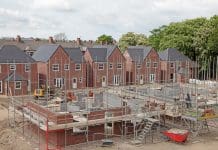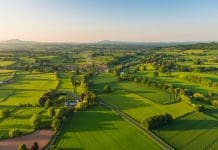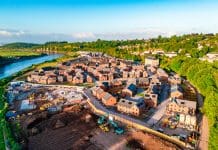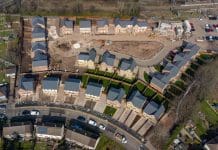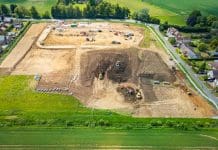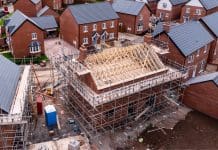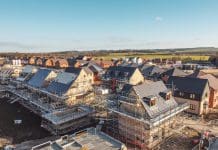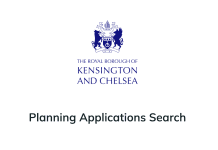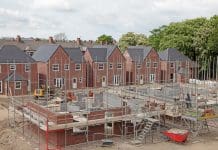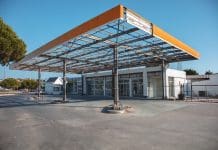The number of new homes planned on green belt in England has increased to more than 360,000 as the government tries to meet housing targets
Countryside campaigners have raised fears that green belt protections are being eroded in order to meet ambitious government building targets.
The Campaign to Protect Rural England (CPRE) revealed figures showed the number of homes planned on green belt sites has risen from 81,000 in 2012 to 362,346. The largest number of developments planned are in the north west and east of England.
At the start of the New Year, Communities Secretary Sajid Javid said green belt was “absolutely sacrosanct” but also said in the “most exceptional circumstances” building on this land should be a consideration. The government has also hinted building on green belt to increase housing provision could be necessary.
According to data from the House of Commons library the number of homes granted planning permission annually on green belt rose from 2,258 in 2009-10 to 11,977 in 2014-15. This means there was a net loss of green belt between 2004 and 2014-15 of 41,570 hectares.
Choices ahead for the government
Shaun Spiers, the chief executive of the CPRE, said: “The government faces a choice. It can either continue to set inflated and undeliverable targets that fail to increase building rates and force the release of green belt land and other countryside for development. Or it can set realistic targets and get the nation behind building the new homes we need.”
Building on green belt is increasingly becoming a topic of discussion as the housing crisis continues to mount, adding pressure on the government.
Commenting on the CPRE figures, a spokesperson for the Department for Communities and Local Government said: “These claims are based purely on projections in local plans, including those not yet adopted.
“This government is committed to protect the green belt. Only in exceptional circumstances may councils alter green belt boundaries, after consulting local people and submitting the revised local plan for examination.
“We’ve been absolutely clear that councils must prioritise development on brownfield land, and have announced plans to radically boost brownfield development and bring life back to abandoned sites.”
Green belt development inevitable
A survey by the Local Government Information Unit and the National Trust found that 58 per cent of councillors who preside over green belt were resigned to the fact protected land would need to be allocated for housing in the next five years.
A spokesperson for the National Trust said: “There are concerns the new housing white paper, expected later this month, could make matters worse, if it sets rigid housing numbers for local plans that don’t take account of local factors such as green belt and areas of outstanding natural beauty.”
Andrew Whitaker, the planning director at the Home Builders Federation, said reform was needed. He said: “A strategic review of green belt policy could better ensure that this broad-brush policy evolves to cover the type of land many believe it was set up to protect, such as areas of natural beauty and gaps between settlements, while allowing the country to address our housing crisis in a sustainable way.”


